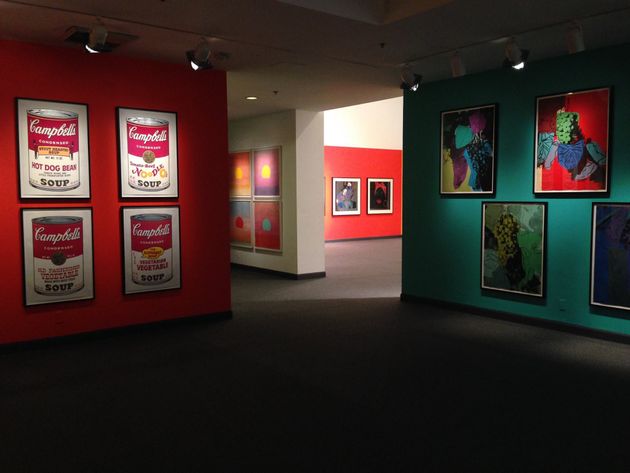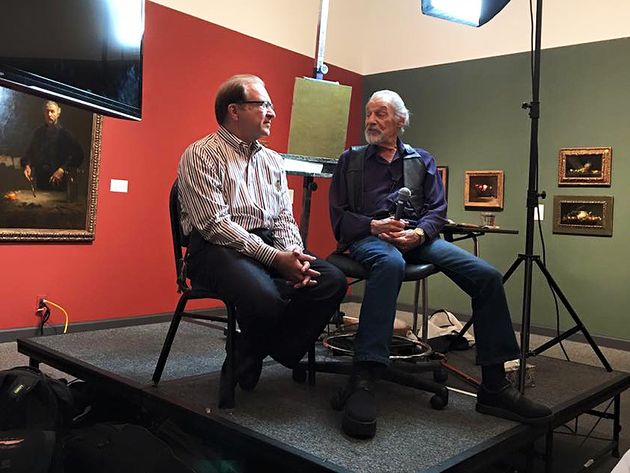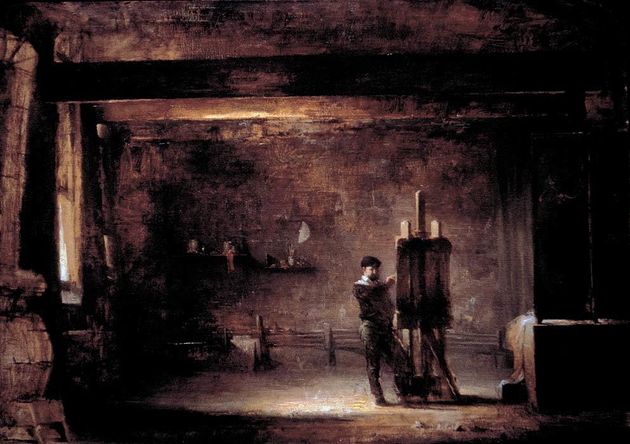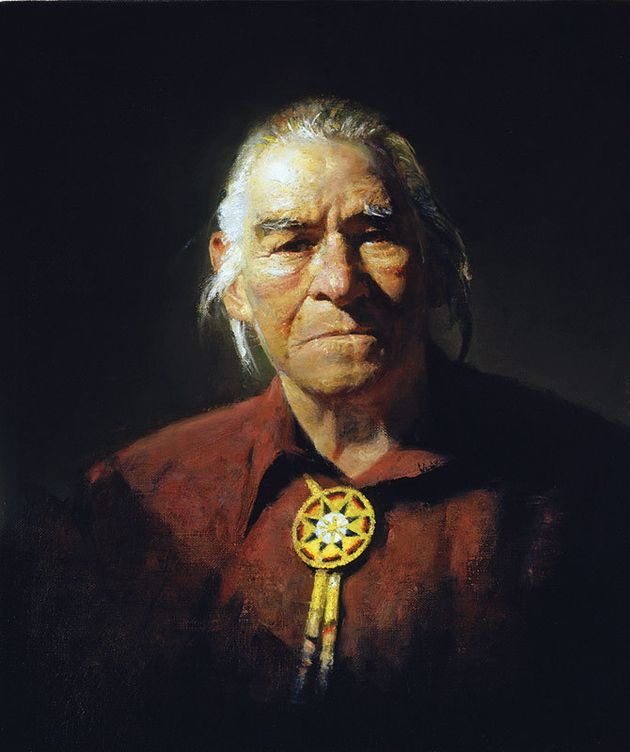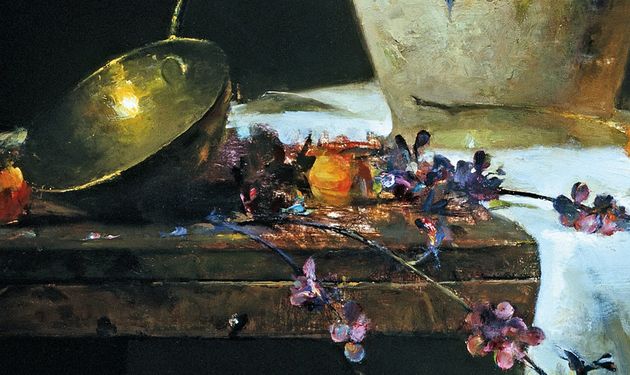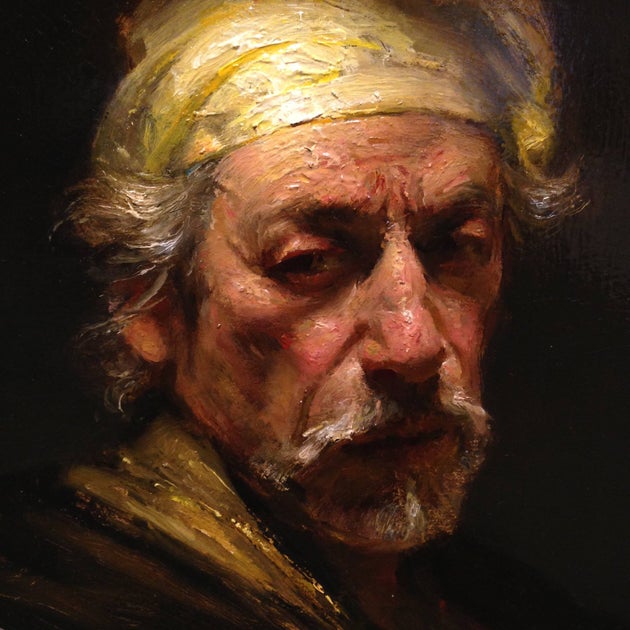
© DAVID A. LEFFEL
David Leffel’s recent retrospective exhibition, which was on view at the Frederick Weisman Museum of Art at Pepperdine University between May 14th and August 7th, was, in the artist’s own words; “a visual expression of the journey I call ‘learning to paint.’” Leffel’s journey, towards a Rembrandtian style that explores the inherently abstract underpinnings of representational painting, has been in opposition to modernism, which rejects the kinds of hard-won visual truths that he has found beautiful and essential. 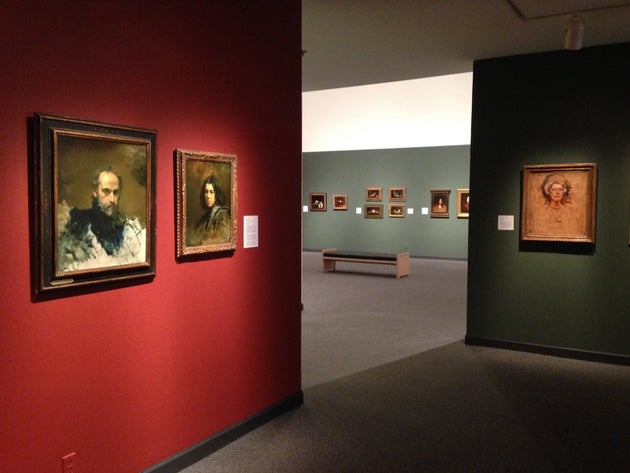

PHOTO: THE FREDERICK WEISMAN MUSEUM
Curated by Michael Zakian, the Weisman’s Director, Leffel’s exhibition opened a month after the closing of Andy Warhol: Life and Legends, a show of prints that have a nearly antithetical set of values from Leffel’s. The bookending of the two shows—a carefully considered juxtaposition—was a stroke of brilliance on the part of Michael Zakian, who offered his audience the opportunity to witness two wildly divergent artistic careers that also have some subtle connections and overlaps.
PHOTO: THE FREDERICK WEISMAN MUSEUM
Warhol and his art are widely known, but Zakian, who is the author of a new book on Leffel—David A. Leffel: The Mastery of Light— makes a strong argument that Leffel also deserves his moment in the spotlight: “Today he (David Leffel) stands as one of the founders of the contemporary realist art movement,” Zakian writes in the book’s introduction, “and as someone whose work is revered throughout the nation and beyond.” If you value art that comments on the era in which it was made you are likely going to always prefer Warhol, but if you value the idea of painting as a long, deep conversation with tradition, then Zakian has a point to make.
PHOTO: ALEXEY STEELE
Born within three years of each other—Warhol in 1928, Leffel in 1931—both were the sons of Eastern European immigrant families, both dealt with difficult childhood illnesses and both began their careers as commercial artists. Leffel’s differences from Warhol—his adherence to Old Master techniques and subjects, his commitment to skill and his disconnect from contemporary culture—are what make his retrospective both challenging and perplexing.
Leffel’s retrospective offered, at it’s best, the chance to see paintings by an artist whose mesmerizing command of technique has taken decades to develop. The exhibition’s weakness, which is that Leffel’s work is so doggedly rooted in past traditions and idioms, is directly interwoven with its strengths.
© DAVID A. LEFFEL
Two Self-Portraits Leffel made in the late 1950s, when he began to pursue painting seriously, show how in the course of a single year he veered from the influence of a Modernist (Modigliani) towards an Old Master (Rembrandt), a change in course that he has never looked back from.
© DAVID A. LEFFEL
Leffel’s paintings have, for more than five decades, maintained a conversation with Rembrandt, so much so that it is tempting to dismiss Leffel as an epigone, the less-distinguished follower of a much-venerated master. Leffel’s paintings have Rembrandt-style lighting—strong directional lighting with cast shadows and reflections—and the flickering impasto of their surfaces is very much an homage to the Dutch Master’s varied and incomparable brushwork.
© DAVID A. LEFFEL
When applied to a portrait that needs to emanate dignity—as in his portrait Tony Reyna, a revered member of the Taos community—Leffel’s neo-Baroque lighting offers the necessary solemnity. WIth its soft edges and sensitive attention to lighting, color and brushwork, this painting exemplifies Leffel’s laudable capabilities as a portraitist. Some other works in the Weisman Museum show—for example a wedding portrait rocker of John Cougar Mellencamp and his bride—lack the sense of purpose and clarity of mood present in the Reyna portrait.The Wedding comes across as a pastiche with an indefinite mood.
© DAVID A. LEFFEL
Leffel’s best works are his recent still life paintings. In these works, Leffel’s acute sense of materiality and his ability to manipulate oil paint come on strong, allowing him to achieve strikingly tender effects of space and surface. Leffel’s still lifes, seen at close hand, have a genuine poetry and revelatory visual power. Seeing the insistent abstractness of Leffel’s brushwork in person offers up some compelling questions about how representational painting works now and how it worked in the past. His brushwork is, simply put, masterful.
© DAVID A. LEFFEL
“When I am completely by myself in the studio,” writes Leffel, “in a state of attentive waiting—to paint, to learn—there is a great sense of being alone but not isolated.” Leffel’s deep connections to the art of the past challenge the powerful notion that art must be married to “progress.” He and his art find connection in a kind of beauty that most contemporary artists no longer acknowledge. If you don’t care for Leffel’s work, or for his orientation, you can at least think of him as beautifully, even gloriously, out of touch.
David Leffel believes that painting is something messy you do with brushes in your hands, an idea that Andy Warhol once walked away from, smiling all the way to the bank.
© DAVID A. LEFFEL

